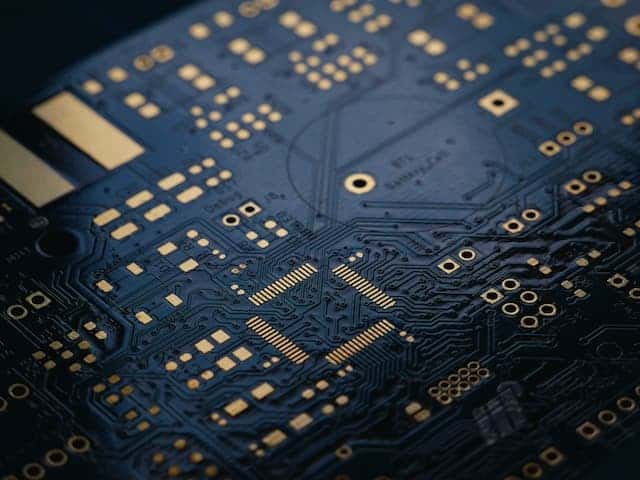India has been trying to fix itself as a chip powerhouse, but its efforts have hit a new setback. The country’s plan to produce chips has been hindered by a lack of investment and expertise. The latest setback is likely to delay its ambitions further. India’s chip plan is twofold: lure in foreign brands and build on areas where India has an advantage, such as chip design. The govt of Prime Minister Narendra Modi has laid out incentives for the industry. This includes a $10 billion incentive plan for the semiconductor industry. India has also been making moves to bring the manufacturing of chips to the country.
Issues
The issue for many nations looking to boost their chip making prowess is that the brands and nations that dominate the industry are few and far between. For example, Taiwan and South Korea make up about 80% of the global foundry market. Foundries are facilities that produce chips that other brands design. While India might not have native semiconductor firms, its plan under the govt of Prime Minister Narendra Modi relies on trying to attract foreign giants. Another issue is the lack of investment and expertise. It is hard for India to make a mark in this segment as it requires huge funds in building R&D capabilities.
Recent Setback in the chip industry
India’s chip plan has suffered another setback as the country’s largest chipmaker, Semiconductor Manufacturing International Corporation (SMIC), has decided to halt its plans to build a plant in India. SMIC signed an MoU with the state govt of Gujarat in 2020. The MoU is to build a $7 billion chip plant. However, the company has now decided to focus on its existing facilities in China.
Also, Reuters reports that ISMC, a joint venture led by Israeli chipmaker Goto Semiconductors, originally planned to establish a semiconductor base in southern India. However, after Intel announced the deal for Tower Semiconductor, the project was shelved. This also caused a new setback for India’s semiconductor plan.
Reuters claims that ISMC had planned to invest $3 billion to build a semiconductor facility in southern India. But with the new trend, the plan has now been put on hold indefinitely. Previously, Intel spent $5.4 billion to acquire Tower Semiconductor. The deal is still awaiting approval from multinational regulators.
Issues in starting a strong chip base in India
India faces several issues in forming a strong chip manufacturing industry. These issues include:
Gizchina News of the week
- Lack of investment and expertise: To build a semiconductor manufacturing industry requires a huge investment in building R&D. To produce semiconductors or form a Fabrication unit is a business only a few brands can pull off. These plants need billions in funding to pull this off.
- Dependence on imports: India still depends on imports of electronic parts from other nations. This shows that though several progress is taking place in the country, the biggest issue for the semiconductor industry is still low funding in the entire ecosystem.
- Few firms dominate the industry: The firms and nations that dominate the industry are few and far between.
- Bureaucratic dysfunction: India has committed itself to expanding its semiconductor manufacturing in the country. But bureaucratic dysfunction and a lack of water are hindering its efforts.
- Lack of talent: To build a semiconductor manufacturing industry needs enough talent. While India already has a strong semiconductor research and design industry, it needs to attract more research centres. It also needs more schools to build a strong semiconductor ecosystem.

India now has no choice but to rely on firms from outside India to tackle the issues it is facing. In Dec 2022, India greenlit a $10 billion incentive plan for the semiconductor industry. The govt incentives and the demand for more chips both local and foreign are pushing firms to look into setting up hubs. However, India needs to make the same level of interest in industry stability and future funding as its rivals do.
Positives in India’s focus on chip design
Despite the many issues that are facing India’s plan in the chip industry, it is not all bad at the moment. India has some pros that are working in its favour. Some of them include
- Lower capital needs: Chip design needs less capital funds than chip manufacturing. This makes it more accessible to smaller brands as well as startups.
- High – value addition: Chip design involves creating the intellectual property that goes into the chip. This is a high – value addition to the semiconductor industry. It can also lead to higher profits and a more stable business model.
- Strong talent pool: India has a strong talent pool in the field of chip design. The Asian nation has many engineers and researchers trained in this area. This gives India a rival edge in this segment of the semiconductor industry.
- Easier to scale: Chip design can be scaled up more easily than chip manufacturing. This is due to the fact that it does not require the same level of infrastructure and funding.
- Strategic level: By placing a focus on chip design, India can place itself as a key player in the global semiconductor supply chain. This can help the country attract foreign funding and deals. It will also help the nation to build a stronger semiconductor ecosystem.
India’s focus on chip design over manufacturing is a strategic move that plays to the nation’s strengths. While India is making moves to bring the manufacturing of chips to the country, its focus on chip design can help it place itself as a key player in the industry.
Final Words
India is doing all it can to ensure that it is in a good position in the chip design and manufacturing industry. However, its focus on design is a good trend. Despite some positives, India is facing a lot of issues in the chip industry. Some major brands are halting plans to build a plant in India. This is not good for a country that is trying hard to grow its chip business. Also, India needs a lot of funds as well as experts in the field. While it has enough people to train and has an interest, it needs trained experts. This is also a big hurdle that the nation needs to cross. While India’s plan to lure in foreign companies and build on areas where it has an advantage, such as chip design, is a step in the right direction, it needs to address the challenges it faces to achieve its ambitions.
Via: gizchina.com










